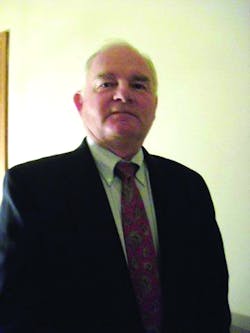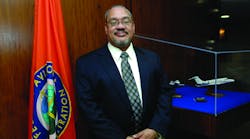Assessing the Privatization ‘Threat’
By Scott Fuller
It was 1981. Huddled together in a small anteroom at Auburn University were some 90 seasoned airport managers and I, a fresh Deputy Director of a Florida airport authority managing one air carrier and two general aviation airports. Though I had ten previous years experience in aviation, airlines and fixed base operations, I fashioned myself as an industry sage even though this was my first foray into airport management.
The topic of our session was titled the “Threat of privatization”. The moderator of the event, the esteemed manager from Pompano, Fl, Morgan Rankin, opened the session by stating “I tell you right now, that if any of you in this room are operating your airports with a tax subsidy, you’re in danger of being privatized. It’s coming and we’re here to get ideas what to do about it”. With the tax portion of my budget running roughly 80%, being most affected I rose my hand and answered “Why don’t we start a private management company?”
While Morgan shrugged me off, I was being serious. Having worked in the private sector for airline, FBO, rental car, construction and owning my own accounting firm, I could think of a myriad of things I could do faster, cheaper and more efficiently operating as a private enterprise than as a public entity. Where was the threat?
I didn’t realize it at the time, but I was somewhat spoiled due to the fact that my authority was what’s know as an “autonomous” authority -- autonomous meaning that other than the appointment of board members by three different communities, our board was able to tax, sue, borrow money, make decisions, and other than picketing, rioting, and slewing bad words (all of which was experienced), there was nothing anyone could do about it. Other than having to comply with certain government regulations and directives (some refer to as meddling) we were free to manage the airports as we saw fit
Rather than sit on our laurels, our management team in two years managed to double non-tax revenue and instituted a cash management plan that tripled interest revenue. Even though we were a deficit operation we were sitting on substantial cash reserves (all slated for future projects, of course). We also attempted to electrify the accounting process, but the authority wasn’t ready to accept the fact that computers were going to be necessary in the future. It was then time to settle in for the long haul, as we were looking at 20 years to get off the public dole.
With so many Pan Am operations in the area, I somehow caught the eye of their aviation division and was flown to New York to meet with their general manager. He stated “I don’t know if you’ve heard of airport privatization, but we’re in the business”. “I’ve heard things”, I said. They operated Teterboro Airport in New Jersey, Westchester County Airport in New York, and the 60th street heliport in Manhattan at the time. Pan Am had been successful at taking these neglected facilities and turning them into lucrative, viable, and active airports.
He said, “We’re looking to expand and you look like the type of person we can use, but I warn you, many of your colleagues will see you as a traitor”.
“Why?”
“Because, they see us as a threat and as taking their jobs”.
“Then, why don’t we hire them?” I asked, thinking of the other 90 people I had discussed going into business with and who would soon be looking for work.
The response was we could, but we would have to move them, as the cities interested in privatization at the time were looking for a change, and didn’t understand how that could be done with the same management in place. There it is. I hadn’t seen that threat at first. Though the people are a large part of it, the truth is privatization is more about a method of operation.
I accepted the challenge. The training was far more intensive and encompassing than an individual manager has access to, especially in the case of Pan Am. Never really ending -- through company sponsored university management courses, networking with executives throughout the corporation -- in three years most managers were writing their own leases from scratch; developing and managing request for proposals; performing rates analyses; developing business plans; and in addition to running their own airports, consulting to major facilities throughout the country. It just wasn’t the type of experience you get working for the public sector.
While the American Association of Airport Executives and other organizations do a tremendous job of helping airport administrators develop, they just can’t match the intensity of a service company inclined to develop its only asset -- its people.
While all of us in the industry know of at least one “what’s wrong with this picture” administrator, the vast majority are competent, dedicated managers that perform to the best of their ability. The question becomes, What can be done to enhance their abilities and improve efficiencies? Privatization, though not the only one, is definitely an option.
In between stints with different privatization companies I returned to the public sector to manage the largest reliever airport project in the country at the time. Having completed building a new airport with a major bureaucracy, I broached the idea of privatizing the airport with my board and the county. Walking with a newly appointed board member in Reno after a AAAE-sponsored meeting on the subject, I asked him what he thought.
“Worried about your job?” (Again with the threats.) Apparently he had no knowledge that it was my idea. When the idea was subsequently nixed, I left and started my own management firm, 15 years to the day I mentioned it to that group of Auburn fellows.
Having been involved in the development of management or lease agreements and subsequent airport development of over a dozen airports with three different privatization firms, I can categorically state that there is no such thing as a cookie cutter approach to privatization. Each airport’s lease agreements, rules, business plans, etc. have to be tailored to each facility, as there is no one correct answer to what airport privatization is.
Question is, What do you want it to be?
* * *
About the author
Scott Fuller is chairman & CEO of Airport Technologies, Inc., a multi-faceted business development consulting company. In the privatization sector, Scott has held the positions with American Airports Corporation and Pan Am World Services, Inc. In the public sector, he was director of aviation for Gwinnett County Georgia, and has held director positions under airport authorities structures. He is an instrument-rated pilot and former aeronaut for NBC radio.




